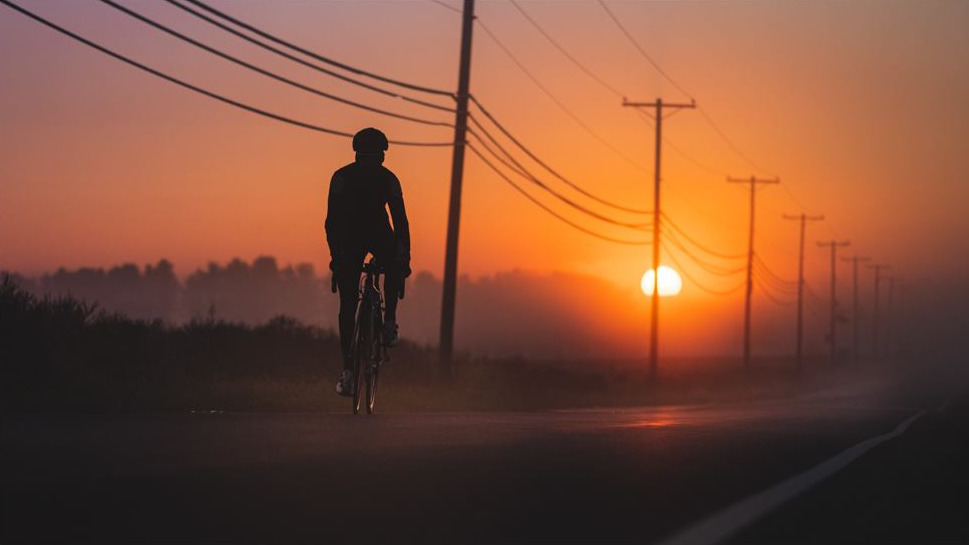
Cycling poses many challenges, some of which are easier to overcome than others. Extreme weather can make a hard day in the saddle even harder if you’re not adequately prepared. Most seasoned cyclists know that if a ride finishes after sunset, you bring lights; if there's a chance of rain, you bring rain gear; and when riding in exposed sun, you wear sunscreen.
But what to do if you’re coming from a relatively cool environment and parachuting into an event in hot conditions?
Last season I had the unfortunate experience of racing in sunny and very hot conditions (91F°/33C°) after a week of training in relatively mild, 60F° weather. Ahead of the event I tried to be optimistic, but just a few minutes into the first race, I overheated quickly. Suffering right from the start, I way underperformed. My body was not used to the triple-digit road temps and, as a result, my heart rate was over threshold when I was pedaling zone 2 watts.
Knowing months in advance that this event was going to be staged in hot conditions, I should have prepared for riding in the heat by riding in the heat. What could I have done differently in the lead-up to this event? Plenty, I just made poor choices and hoped for the best. Here are some tips to help you fare better in your next hot-weather outing.
Train hot, race hot

USA Cycling recommends a passive approach to heat adaptation for cyclists. After completing a training session of 2-3 hours of moderate work, or 90 minutes of interval intensity work, sit in a wet or dry sauna for up to 30 minutes.
A modified passive approach to heat adaptation is to incorporate a standard indoor training session of up to 60 minutes immediately followed by a 30-minute passive heat adaptation session in a sauna as much as four times per week.
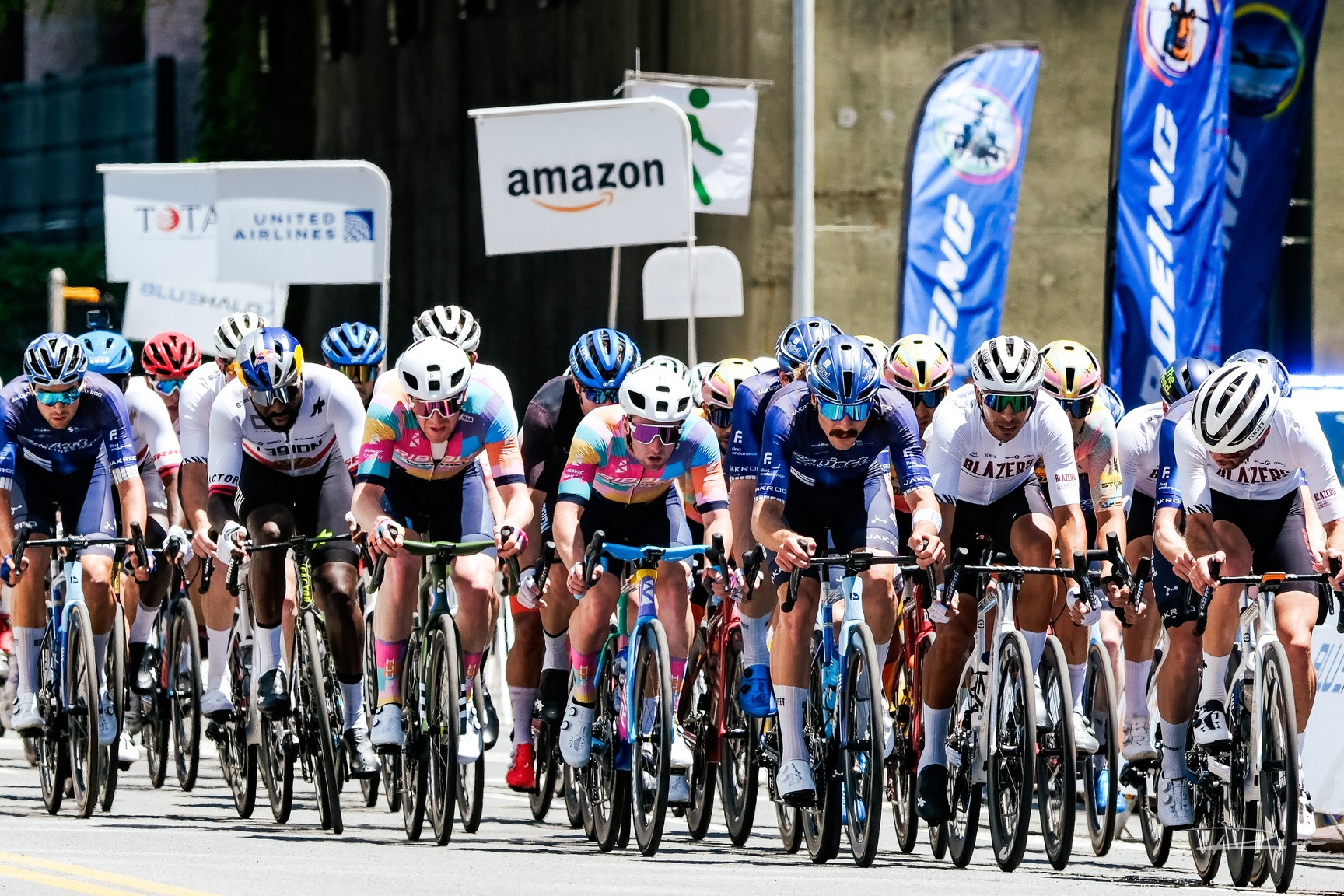
Former owner of Ultra Running magazine, Lisa Henson, competed in the Badwater Ultramarathon. Known as one of the toughest foot races in the worlds, runners complete 135 miles (217km) through California's Death Valley. Henson says she wanted to be as ready as possible for competing in the extreme heat, so she did most of her training in hot conditions in the lead-up to the race.
“While regular training calls for hard/easy days or training blocks, getting ready for high heat requires a physical and mental adaptation. The more training sessions you do while it is hot the better,” Henson says.
“Mostly, you want to get to the point where you can maintain a high heart rate while in a very hot environment and not feel like you are freaking out,” she added.
Indoor trainer sessions
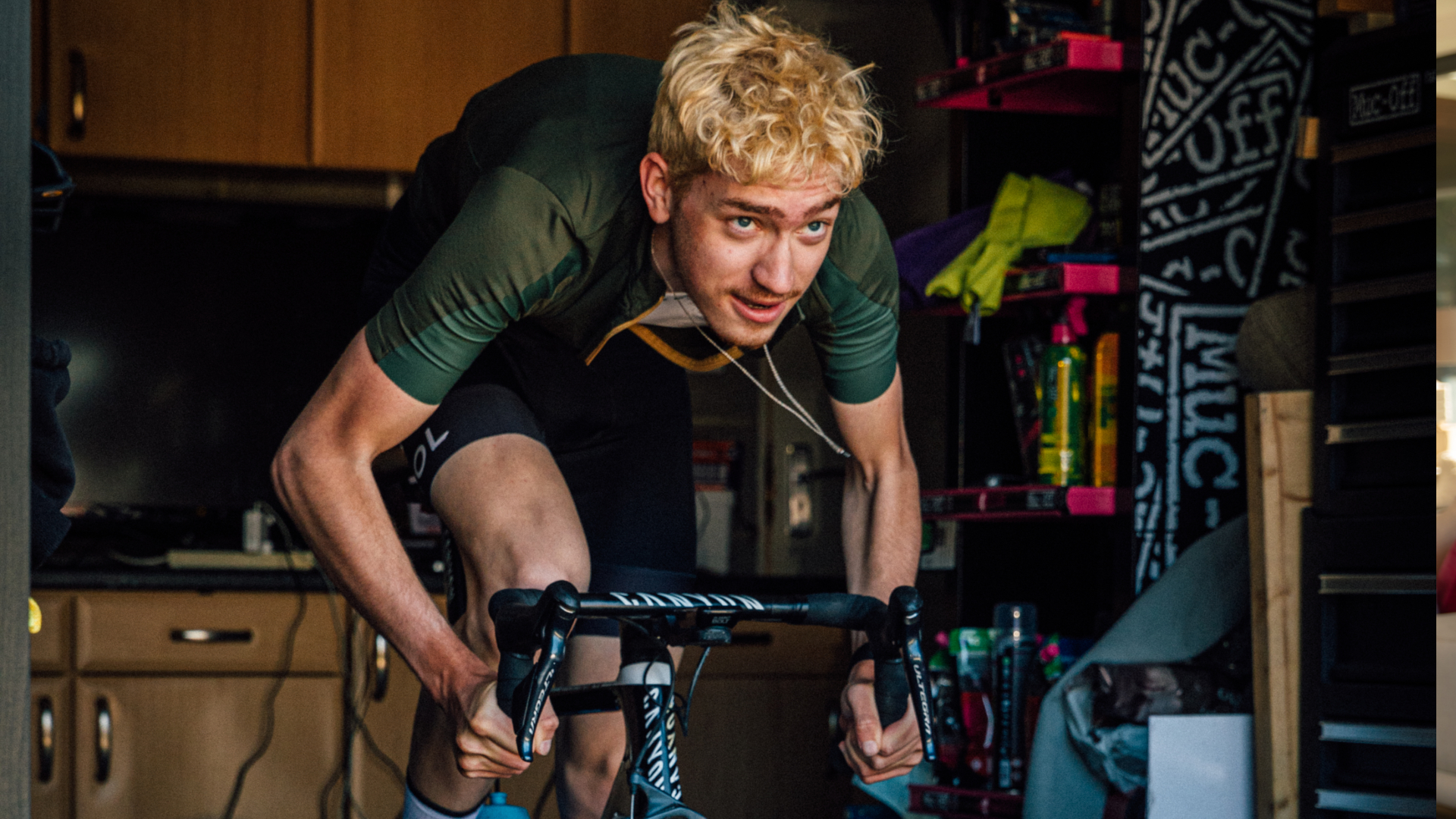
An option for preparing to ride in hot conditions, while controlling your training environment, is to train indoors wearing thermal cycling gear, and without cooling fans. While this may seem quite uncomfortable, it provides a clinical setting in which you can control your environment and your effort. Another bonus of training indoors to become heat adapted is that the data you collect in a clinical environment can be used to inform your heat adaptation status.
You’ll want to perform heat-adaptation training at least two weeks before an event. Make sure to have extra hydration options within easy reach.
“You sweat so much while working hard in a hot environment that electrolyte replacement is high-volume and critical. The body needs to adapt to a volume of water that is not typical and that takes time too,” advises Henson. “This varies quite a bit depending on the length of the event but it is a key part of training. If you can't keep food and water down you can't finish.”
Those who want to limit their trainer time can ride outside while wearing thermal kit to become heat adapted if the ambient temperature is sufficiently warm enough (i.e., greater than 60F°/16C°) to induce heat fatigue.
Heat adaptation is not a one-size-fits-all protocol. Some cyclists may adapt to heat more easily than others; athletes with less muscle mass may adapt to the heat more easily than those with more muscle mass.
Sports technology for heat adaptation monitoring
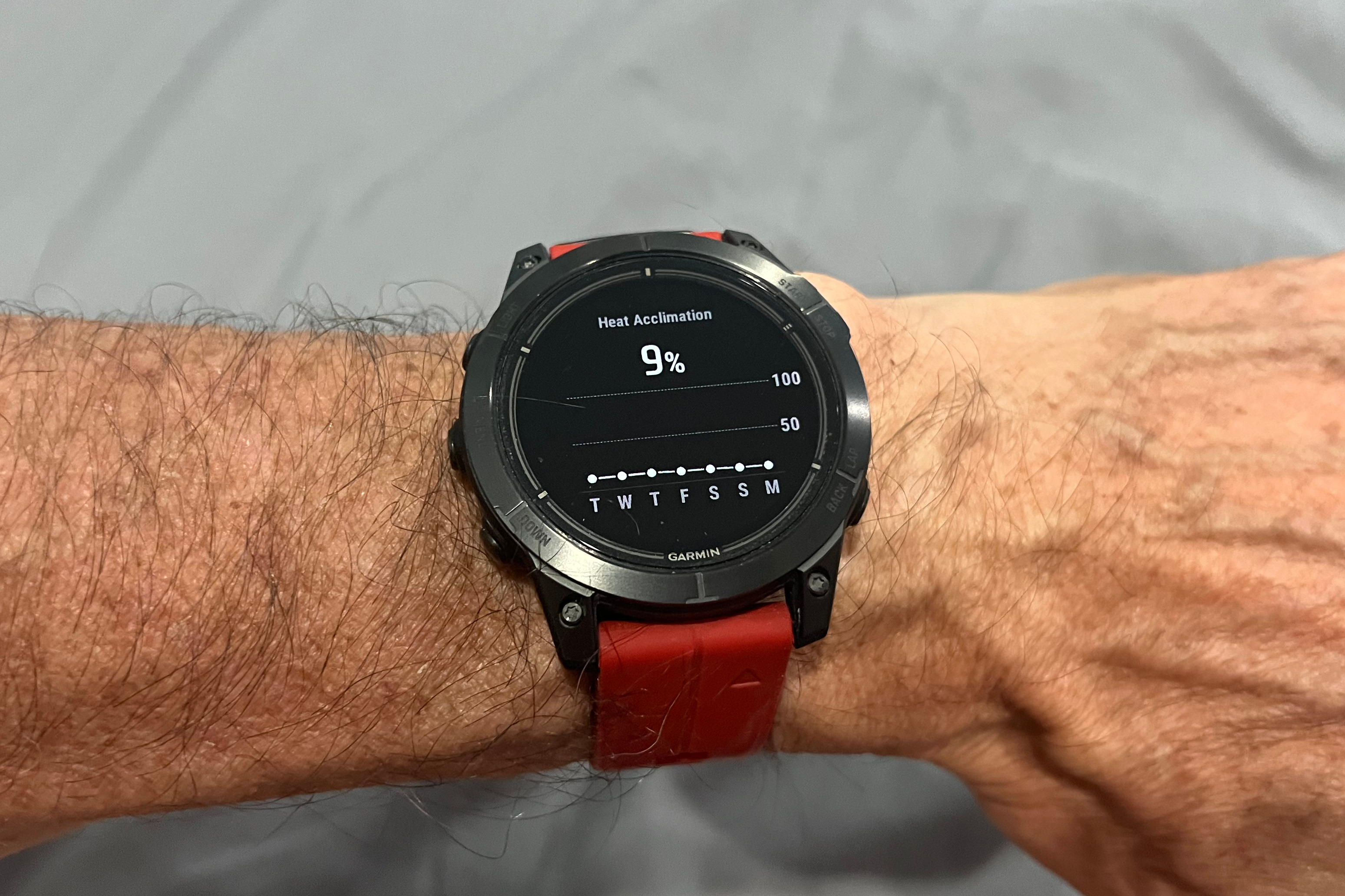
Many wearable devices like the Garmin Epix 2 Pro and some head units like the Garmin Edge 540 offer heat acclimation metrics. Using these features, you can get a relatively accurate indication of your body’s response to working hard (elevated heart rate, respiration rate, and other physiological metrics) in warm weather.
You’ll know you’re becoming heat adapted when your heart rate for a given power output remains steady and does not increase over a specific time and for a specific work load. Once you’ve successfully managed to complete a specific training session with your heart rate under control, increase your power output gradually — maybe just 2 to 3 percent — and see if you can maintain a manageable heart rate.
Heat adapted athletes will have a lower heart rate while performing and resting in warm conditions, in part due to greater blood plasma volume and a better sweat response. Hot weather causes one’s heart rate to remain elevated, which in turn affects performance. When racing in hot conditions, recognize that power output may decrease by more than 5% when temperatures exceed 90F°/32C° even if you’re heat-adapted.
Once an athlete’s heart rate exceeds threshold when cycling in hot conditions, it can be very difficult to get one’s heart rate under control without completely backing off the power. So keep an eye on both your power output and your heart rate while doing controlled training sessions.
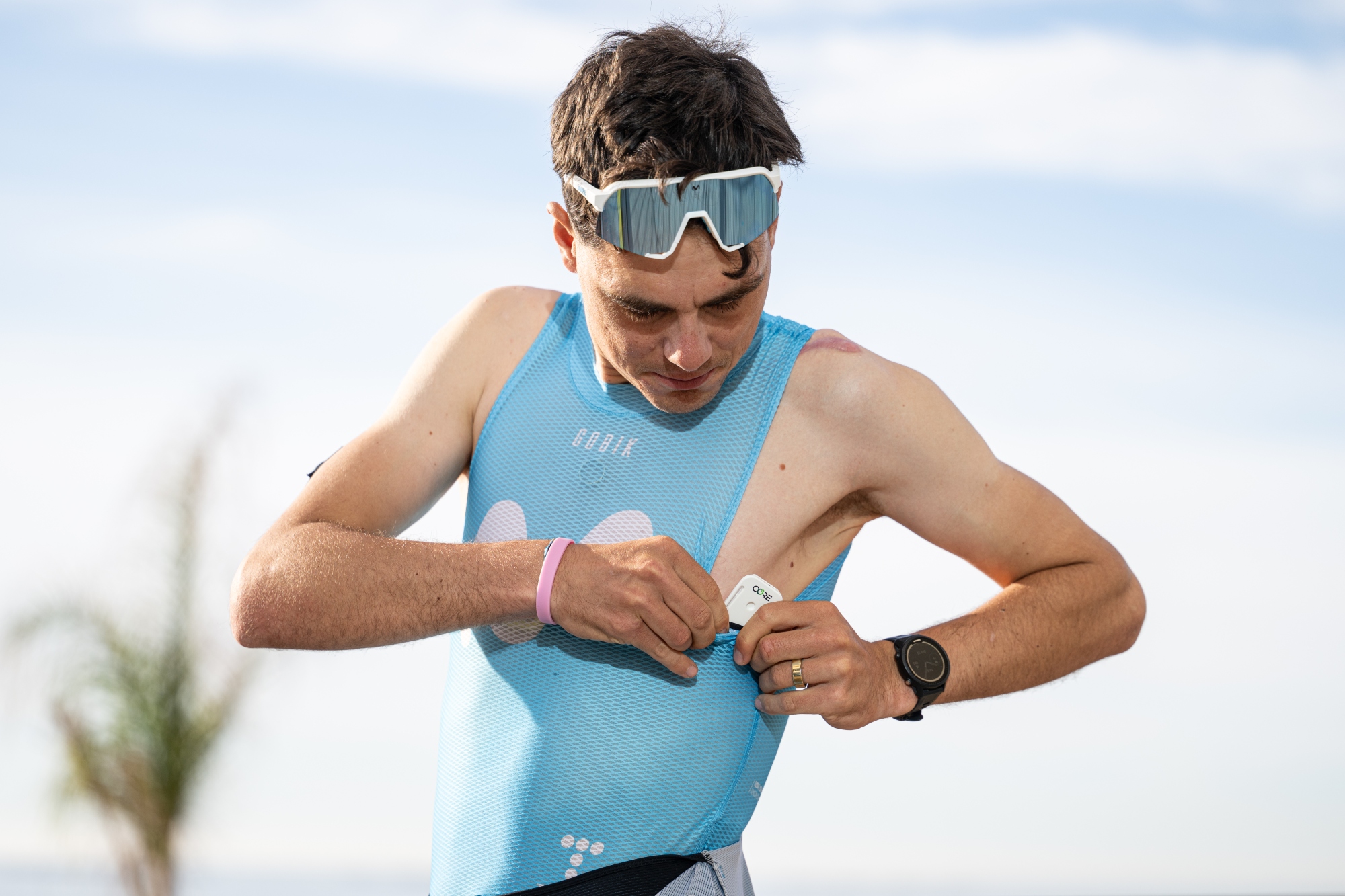
A relatively novel technology for monitoring physiological conditions while cycling are body temperature sensors. Team Lidl-Trek is using the CORE body temperature monitor in 2024, as are other professional teams like Soudal-QuickStep, Movistar, Bora-Hansgrohe, and Human Powered Health. This sensor can be clipped to a heart rate monitor strap, and when paired with a mobile phone, wearable display (like a Garmin watch), or a bike computer, displays biometric data in real time.
Armed with the information provided by this emerging technology, you can train to become heat-adapted, as well as use it to adjust race-day effort according to how well one is managing heat stress based on measuring core- and skin temperature.
Heat adaptation decays at about 2.5% per day, so you’ll want to plan peak performance in the earlier side of this window.
TLDR: Top tips for heat acclimation
1. Start heat adaptation training at least two weeks prior to an event
2. Use technology to inform your training and heat adaptation
3. Stay hydrated to stave early fatigue and to help recover efficiently
To be sure, intentional overheating while training and/or racing can present serious physical stresses. If you have any health concerns, or have previously suffered from heat exhaustion or heat stroke, consult a physician before attempting any heat-adaptation training or racing in very hot conditions.




!["[T]he First and Fifth Amendments Require ICE to Provide Information About the Whereabouts of a Detained Person"](https://images.inkl.com/s3/publisher/cover/212/reason-cover.png?w=600)


